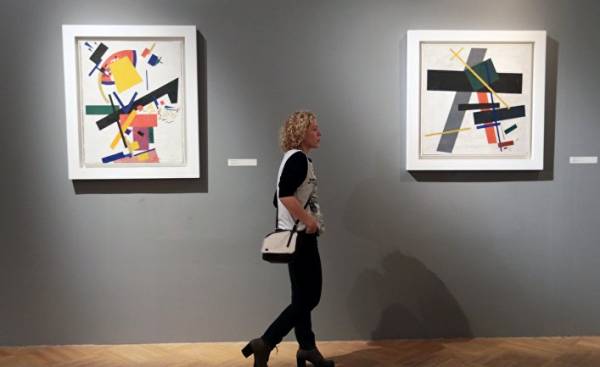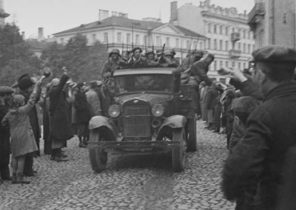
When Kazimir Malevich, founder of Suprematism, 90 years ago, in June of 1927, he finally got a visa, he sighed with relief. Finally he could go through Warsaw to Berlin, where he exhibited 70 paintings at the “Great Berlin art exhibition”. In the Soviet Union clouds were gathering over him: his State Institute of artistic culture was closed in 1926.
In the Soviet Union, the artist increasingly denounced as formalist and bourgeois in the end, as a proletarian can understand the end of objectivity as a zero form? Negative reaction to the high utopia of the avant-garde in 1917 was hard. In Germany, Malevich presented the essay “the World as pointlessness” at the Bauhaus in Dessau, which soon appeared in the book of the Bauhaus, published by Walter Gropius (Walter Gropius) and lászló Maheem-Nadi (László Moholy-Nagy).
It says: “When I in 1915 his desperate desire to liberate art from the ballast of objectivity, came to the square and exhibited a picture, which depicts nothing but a black square on a white background, criticism, and society said: “Everything we loved, everything was gone: we are in the desert… Before us is a black square in a white frame!””
And publishers? In the Preface — have distanced themselves, they rejoiced in the publication of the essay “though in matters of principle, there are differences from our point of view.”
For Malevich it was a disappointment, he still hoped to work at the Bauhaus, having the opportunity to leave the Soviet Union. As Kandinsky or Lissitzky. But the artistic approach of constructivism was the Bauhaus is closer than a radical “Nothing” of Suprematism.
Withdrawn by the authorities ago
So this story is gaining momentum. Before the end of the exhibition Malevich was withdrawn from Germany by the Soviet authorities ago. Approximately 100 paintings, works, sculptures and paintings he left with friends. Germany seemed to him safer than an increasingly totalitarian Soviet Union, where he feared for his job.
Malevich, however, never again saw their 100 works. Under great pressure he even went back to figurative painting. In 1935 he died. The pattern was in German cellars, survived the Nazis, some were in the United States, the other was discovered in 1951 and sold for a ridiculous 120 thousand marks Museum Stedeleyk (Stedelijk) in Amsterdam. Heirs in Russia in 2008 only got a few pictures in exchange for what the rest of the work will remain in Amsterdam.
It’s a little-known detective novel of the twentieth century, which closely connects the end of the Russian avant-garde and Kazimir Malevich with Germany. “Nude icon”, meanwhile, has long been not exposed, and adorns everything: Black square in advertising; the Red cross in pop culture; the Black circle in the design. So Malevich in some ways, still made up of Germany, while the rehabilitation of the avant-garde in Russia still continues.







